Elderberry: description, varieties, planting and care
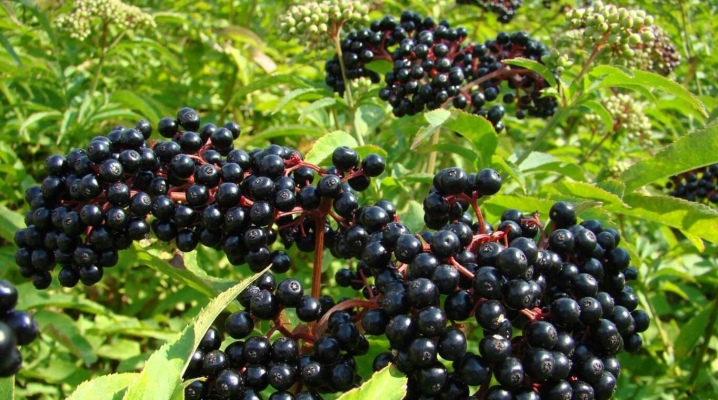
Elderberry is an incredibly popular and well-known shrub with a wide variety of species. Some of them are famous for the healing effect noted by many gardeners. Usually, the mention of an elder draws in the thoughts of a picture of a village garden overgrown with weeds. However, at present, with the advent of new varieties and varieties, this plant has become more plastic in terms of stylistics. In this article, we will take a closer look at the elderberry and figure out how to properly care for it.
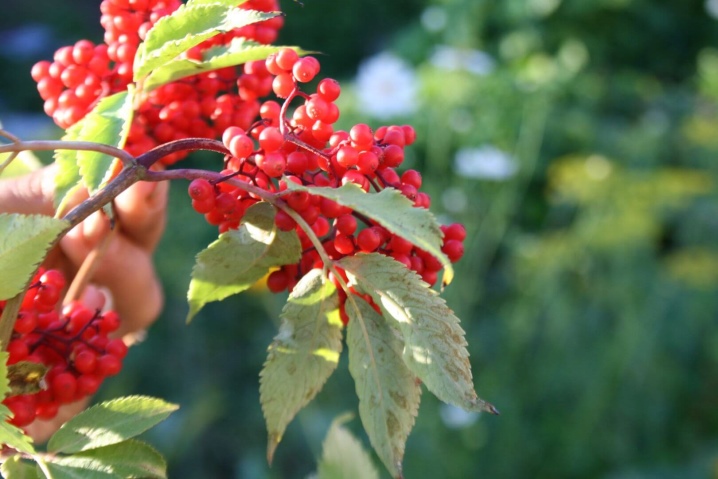
What it is?
Elderberry is a plant that comes from the flowering genus and the adox family. In former times, the specified genus was included in the honeysuckle family, or even stood out in a separate category called elderberry. According to the description, elderberry is a highly decorative and perennial shrub that produces berries by the end of summer or early fall. The bush is large, multi-stemmed and deciduous. Berry bunches on it can be scarlet or bluish black. The berries are small. They are often used in the preparation of aromatic wines, juices, jellies and jams. Elderberry fruits taste bitter, so it is not recommended to leave them without heat treatment.


The leaves on the elderberry are pinnately dissected. With the onset of the autumn season, the foliage turns yellow and then falls off. Inflorescences are miniature umbrellas or panicles. Their usual diameter is 12-15 cm. They are collected from a large number of small creamy snow-white flowers that bloom in the first summer days. The elderberry fruit has a smooth texture. They are spherical. The diameter of the berries is usually 1.5 cm. They ripen in early August or late September. Berries remain on the bush until late autumn. Many birds often feed on them.


Elderberry can be represented not only as a shrub, but also as a relatively small tree. In height, such a plant can reach 2-6 m. In natural nature, elderberry usually grows in deciduous forests or coniferous undergrowth. There are times when the tree grows in such a way that it forms solid and dense thickets.
Types and varieties
In our time, there are and are cultivated many different species and varieties of elderberry. Each of them has its own individual characteristics and distinctive features. Let's get acquainted with them in detail.
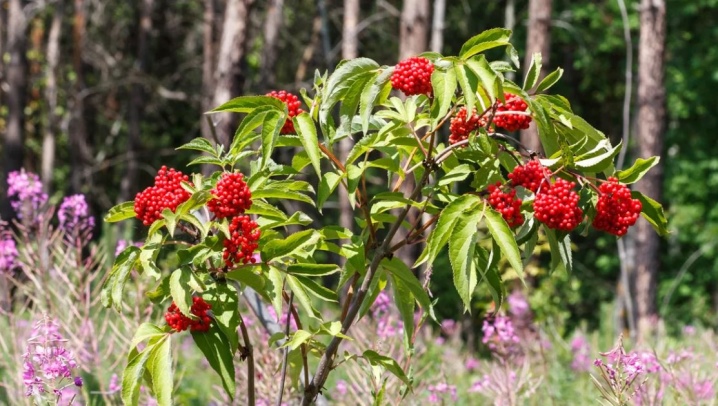
Blue
A decorative variety of elderberry. In its natural environment, it is found in North America. The height of trees usually does not exceed 15 m. You can also meet such shrubs that have neat, thin branches, which are distinguished by a reddish coloring at a young age. The color of the trunks of these elderberry varieties is pale sandy. In the leaf blades of the plant, there are 5-7 coarsely serrated, green-bluish leaves, the length of which is about 15 cm. Inflorescences are distinguished by a corymbose structure. Their standard diameter is 15 cm. They are composed of fragrant flowers of a delicate cream shade. Flowering continues for 20 days. The fruits are characterized by an attractive appearance, have a spherical structure and an interesting bluish-black color. The level of winter hardiness of these species is below average.
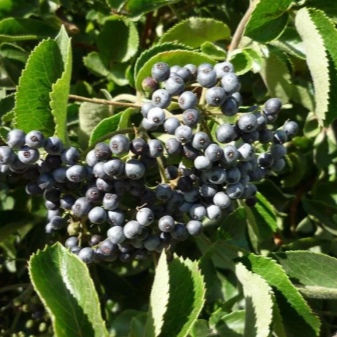

Siberian
Under natural conditions, the elderberry of this species can be found in the European part of Russia, the Far East, East Asia. This plant feels more comfortable in mixed or coniferous forests. In height, this subspecies of elderberry can reach a mark of 4 m. The frost resistance of Siberian bushes is considered average.

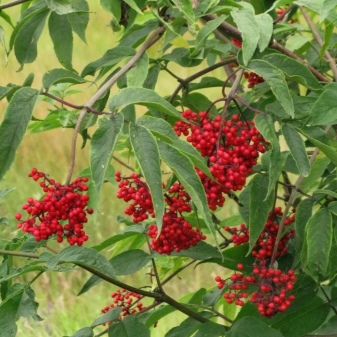
Herbaceous
In nature, these elderberry specimens are common in Belarus, the Caucasus, Ukraine, and in the south of the European part of Russia. These representatives of the species "love" to grow on river banks or rocky taluses. The height indicator of these grassy beauties is 150 cm. An interesting feature is that the herbaceous elderberry does not emit the most pleasant aroma. But during the period of flowering and fruiting, these plants look especially attractive and bright.
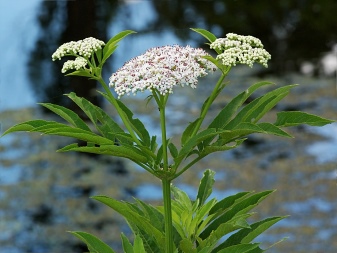

Fruits in the upper sections of the stems form scutes. It must be remembered that fresh fruits are poisonous, since they contain hydrocyanic acid. The dried flowers of this ornamental plant are characterized by a delicate and pleasant aroma. In many cases, they are used as a sprinkle for apples for storage.
Canadian
The specified type of elderberry is considered one of the most highly decorative. It is often used to decorate garden plots. The average height of the bushes is 4 m. The stems are gray-yellow in color. The length of the leaves rarely exceeds 0.3 m. Inflorescences are slightly convex, characterized by an umbrella-like structure. Their usual diameter is 0.25 m. They are made up of small and fragrant flowers of a pale yellow hue.
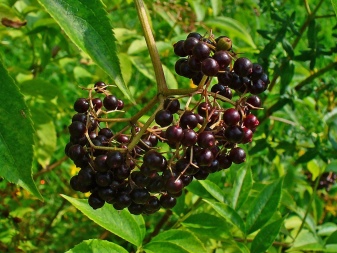

The berries of the Canadian elderberry are smooth, spherical. They are dark purple in color. They can be eaten. In terms of external characteristics, the Canadian elder has much in common with the black elder, but this subspecies is better prepared for development in mid-latitude conditions. There are a number of popular decorative forms of the Canadian elderberry:
- "Maxima" - the most powerful form in comparison with all others;
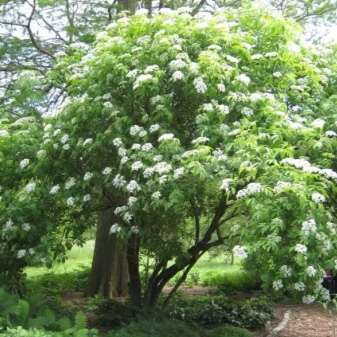
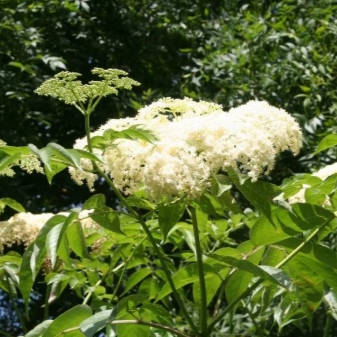
- "Akutiloba" - represented by graceful bushes, characterized by strong dissection on the leaves;
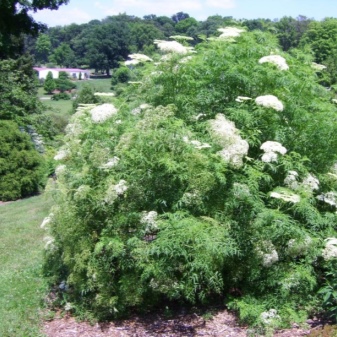
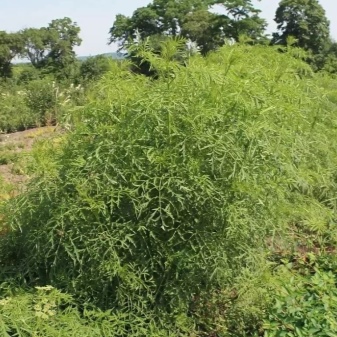
- "Chlorocapa" - characterized by fruits of green color, and the color of the leaves is greenish-yellow;
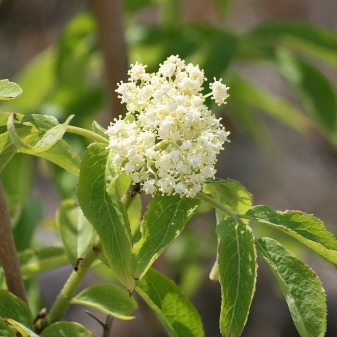

- "Aurea" - the leaves are green in summer, and become rich yellow in autumn and spring.
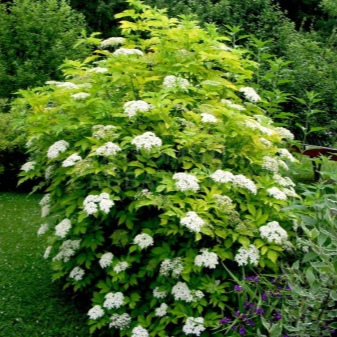
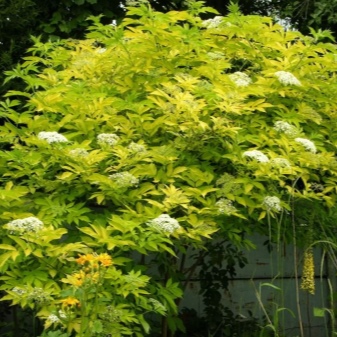
Racemose or red (Sambucus racemosa)
The homeland of this species of elderberry is Western Europe. The plant is represented by a small tree, which rarely exceeds 500 cm in height, or a deciduous shrub with a dense ovoid crown. The average length of the leaf blades is 16 cm. They are pale green in color. They include about 5-7 leaves, long and pointed. On their edge, you can see characteristic teeth. The diameter of the fluffy inflorescences of an elongated structure is 60 mm. They are composed of green-yellow flowers.

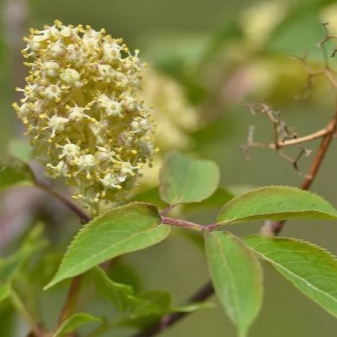
The fruits are small berries with a rich red color. Branches and foliage are characterized by an unpleasant odor. The elderberry in question looks especially effective and expressive when it is bearing fruit.
It should be borne in mind that red elderberry berries are not allowed to be eaten. Even if you touch them, be sure to wash your hands thoroughly. If the skin on the hands once cracked, and juice got into the cracks or ended up on the mucous membrane, then you should promptly consult a doctor. The following decorative forms are distinguished:
- low - represented by compact dwarf-type bushes;
- thin-leaved - at the moments of opening, the leaf blades have a purple color, they are cut into narrow parts, giving the bush a more elegant look;
- purple - the color of the flowers can be either pink or purple;
- yellowish - yellow berries have orange sides;
- dissected-leaved - cystic elderberry - one of the varieties (very popular among gardeners), has large leaf blades that open very early,they are collected from 2 or 3 finely cut leaves;
- pinnate - when opened, the toothed leaves are painted in a purple hue, they are dissected virtually to the middle.

The most popular varieties of feathery varieties are:
- "Plumosa Aurea" - has beautiful openwork leaves, which are green in shade, and yellow in the light;
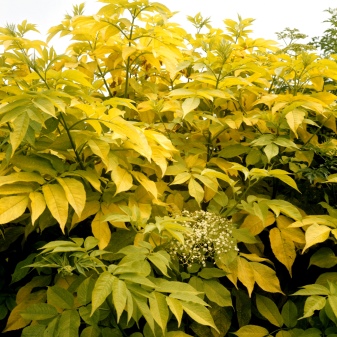
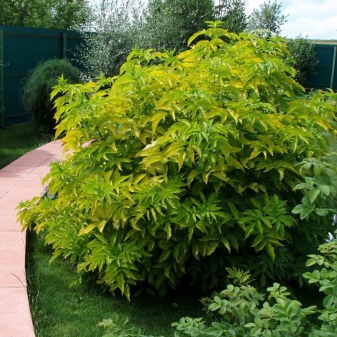
- Sutherland Gold - the foliage of these plants is yellow and more dissected.
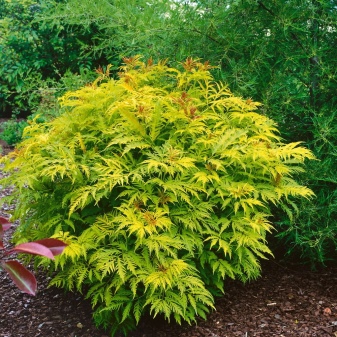
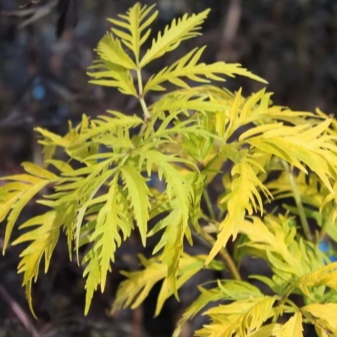
Siebold
This subspecies is represented by spreading shrubs or trees 8 m high. By its external characteristics, the species under consideration resembles a red elderberry, but the elder "Siebold" turns out to be more solid. In the arrangement of the plates of the sheets, there are from 5 to 11 parts. The average length of the leaves is 20 cm, and the width is 6 cm.
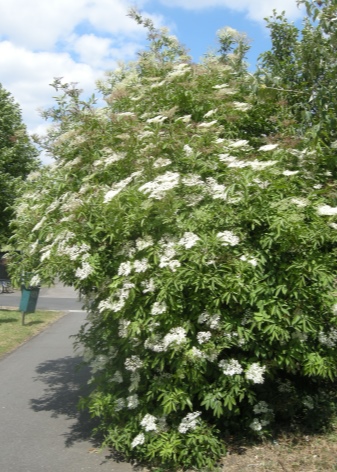
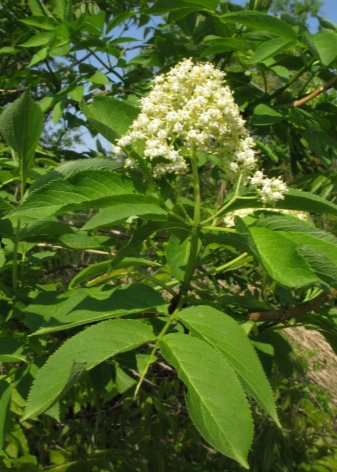
Black
The most common black elderberry is represented by several decorative varieties, very popular.
- Guincho Purple. The average height of the shrubs is 200 cm. Young leaves are green, and mature ones are purple-black in color. In autumn, it is red-leaved. The buds have a deep pink color. The open snow-white flowers have only a subtle pinkish tint. The stems are purple in color.
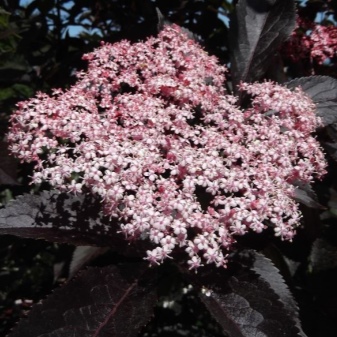
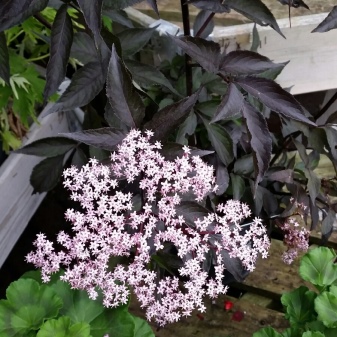
- "Marginata". The length of the shrubs of this variety is 250 cm. Plants can boast of rapid growth. On the upper part of the leaves, there is a fragmented border of a creamy-silvery shade.
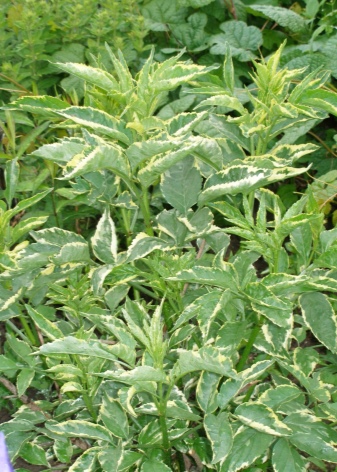

- Pulverulent. Slow growing plant. It has beautiful leaves, on the surface of which stripes and specks of white are visible.
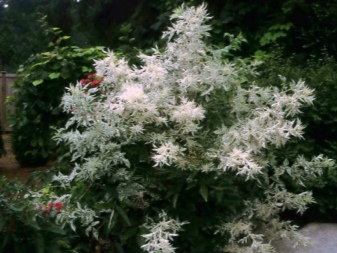
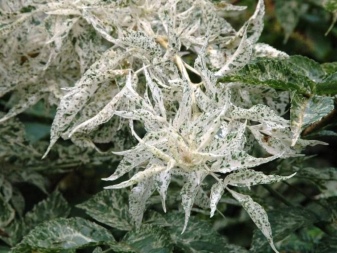
- "Variegata". Variegated elderberry is considered unpretentious. This is a medium-sized shrub, the height of which can be up to 2.5 m. The foliage consists of 5-7 green leaves with snow-white cream edges. The fruits are black and glossy. They are quite juicy.
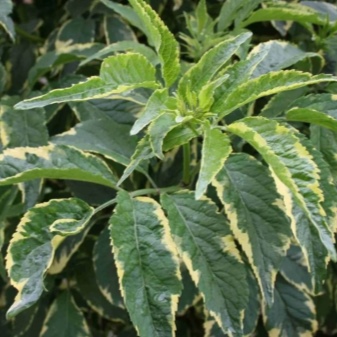
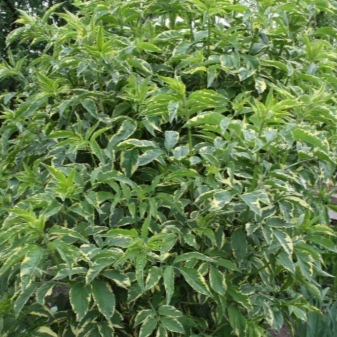
- Laciniata. It belongs to the highly decorative type, has an openwork crown. The leaves are bright green, strongly dissected. The shrub grows quickly and is 2-2.5 m in height. The flowers are fragrant, white in color. The fruits are small, purple-black, shine and ripen in September. After the ripening period, they can be eaten.
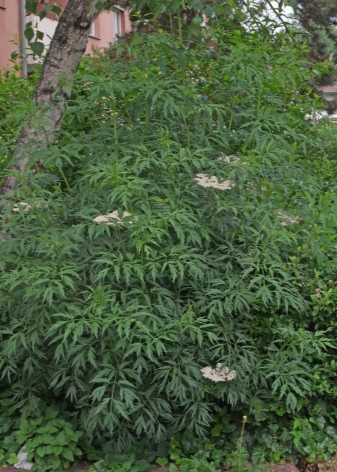
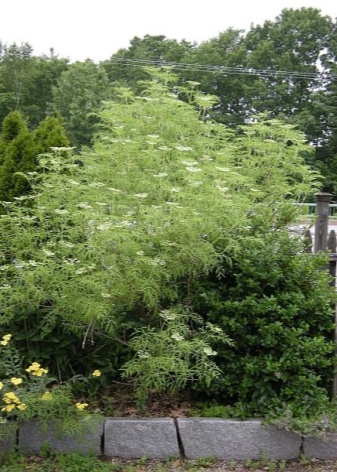
- Madonna. One of the best variegated shrubs. It grows straight, is multi-stemmed. Height - 300 cm, width - 240 cm. The leaves are green with a yellow border. Collected from 5-7 leaves with pointed denticles. The flowers are creamy snow-white in the inflorescences of an umbrella-like appearance.
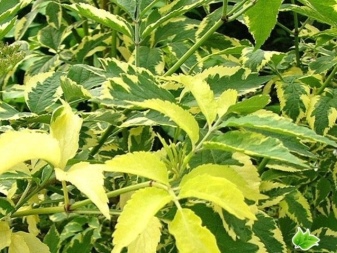
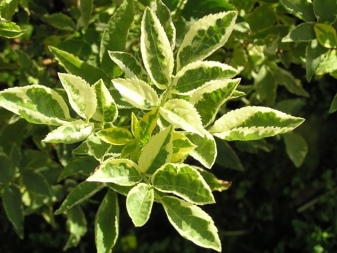
- Golden Tower. Wind-resistant elder, not afraid of either heat or drought. Moderately high. It is relatively shade-tolerant, but grows better in sufficiently illuminated areas. A relatively demanding variety.
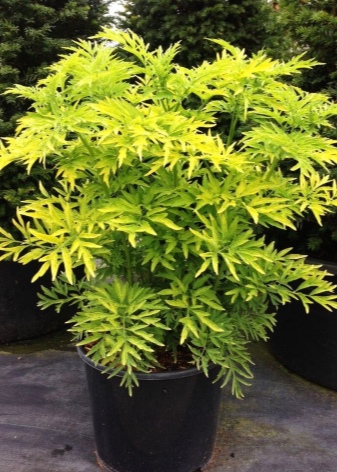
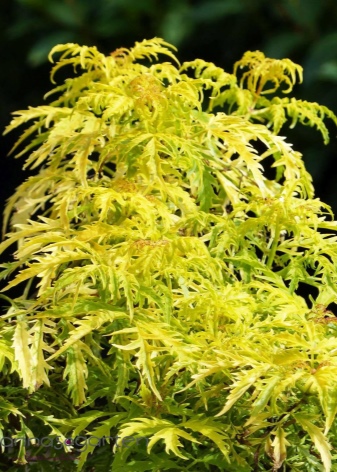
- Split-leaved. It is a shrub with a height of 3 m. It has large green succulent leaves. The plant looks spectacular. But after the first frost, the leaf blades lose their previous aesthetics.

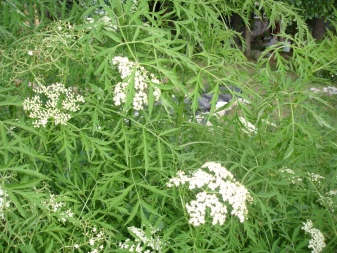
Yellow-leaved
The elder of this subspecies is an ornamental deciduous shrub with branched shoots. The altitude index of the latter is from 150 to 300 cm. The leaves of the plant are highly complex. Consist of yellow, narrowed, finely serrated parts. The flowers are distinguished by their miniature size, snow-white color and a pleasant lemon scent.
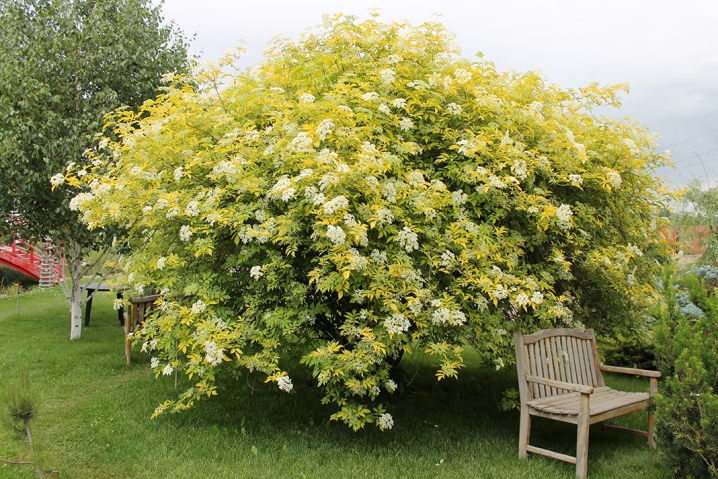
Kamchatka
Decorative and medicinal culture. It is a large shrub of a deciduous type up to 4 m high, with a trunk and branches covered with light brown bark. The foliage is green. The color of the flowers is greenish-yellow or greenish-white. They are small in size. The fruits are also modest in size, but very juicy and have a bright red color.
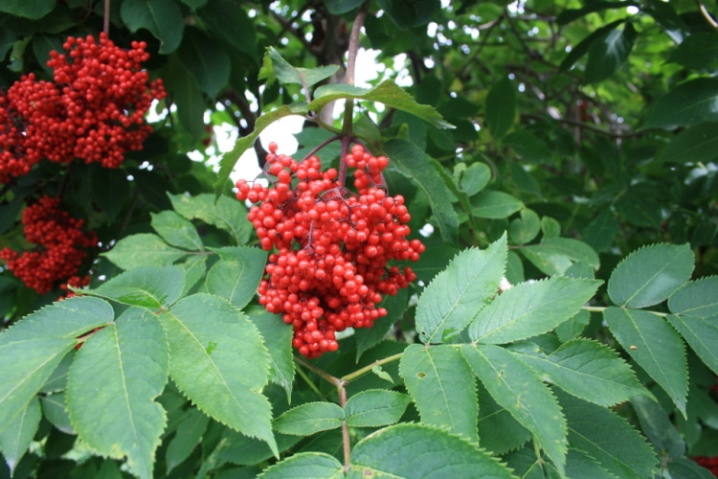
Optimal disembarkation time
Elderberry bushes are planted in spring or fall. Most often, the end of September - the beginning of October is chosen for planting. In the southern regions, you can do this in November, but the weather should be dry and sunny. The main thing is to be in time before the frost. It is better to plant in advance so that the shrub has time to take root before the onset of cold weather. If planting is carried out in spring, you need to wait until there is no risk of recurrent frosts so that the young plant does not die. In autumn and spring, the pit and soil must be prepared in advance, a couple of weeks before disembarkation. Better and faster take root those seedlings that are 1-2 years old.

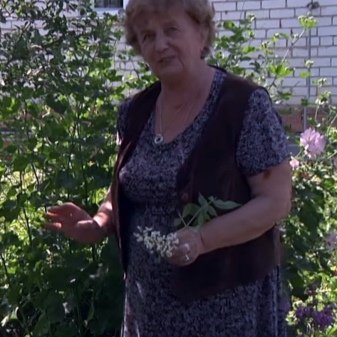
If you plan to send seedlings into the ground that grew at home in containers, you can plant them in late spring, summer and early autumn.
How to plant?
First, you need to find a suitable place for planting an elderberry. Experienced gardeners recommend giving preference to loamy soils with sufficient moisture parameters. It so happens that the soil is acidic on the site. These are not the best conditions. It is necessary to prepare such land in a year or two by liming it. Experts also say that a month before planting the elderberry, you need to properly prepare the soil. It is important to remove all weeds. It will not be superfluous to apply mineral fertilizers, which will have a beneficial effect on the growth rate of elderberry.
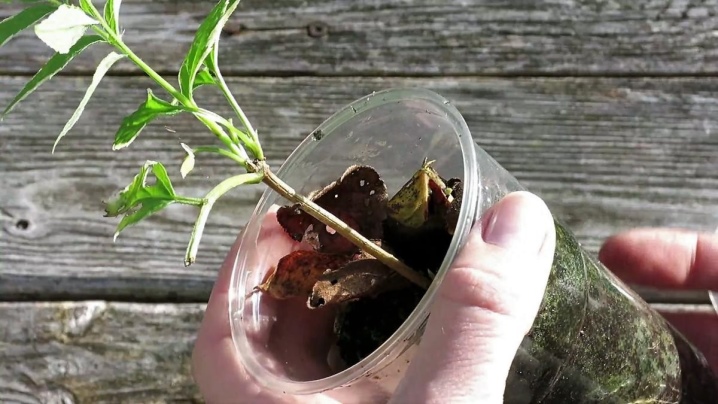
Situations are not uncommon when neither fertilizing nor additives are added to the ground, and the elderberry grew very quickly and reached a good size. This situation indicates that the plant is undemanding to the ground. However, it is still not recommended to leave the soil without useful components. Having chosen a place, you can proceed to planting an elderberry. It is recommended to plant a plant that is already 2 or 3 years old - then it will sooner take root. It is advisable to plant an elderberry in the northern or eastern corners of the local area or garden. For good pollination, this crop should be planted close to other plants.
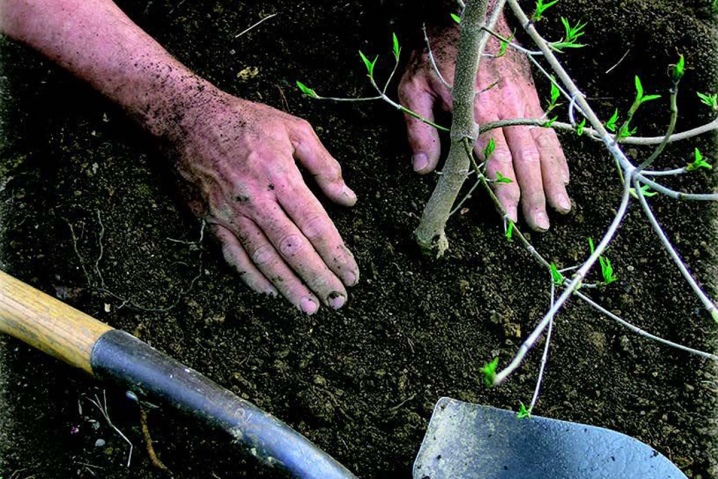
Elderberries should be planted during warm periods. It may be autumn, but you should not choose too cold days. First, you need to prepare pits, the depth of which will correspond to the length of the elderberry rhizomes. For each specific case, the parameters will be different. Fertilizers mixed with soil must be placed in the hole. The bushes should be buried up to the root necks. It will be useful to use boles, which are ordinary colas, well fixed in the ground. As soon as the planting of the elderberry is completed, you need to water it. Until the plant takes root in a new place, it is important to keep the moisture level of the soil in its environment under control.
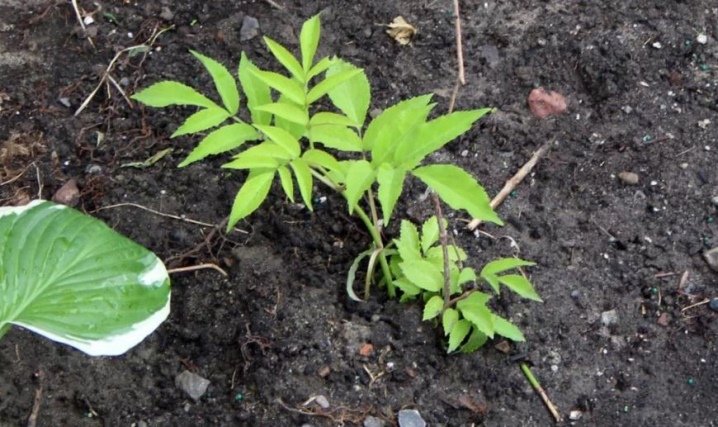
How to take care of it properly?
Although elderberry is an undemanding plant to maintain, it still needs proper care.

Watering
If there is an excess of rain in the summer, then there is no need to water the elderberry. It is possible to reduce irrigation due to the mulching layer present on the upper part of the soil around the trunk - it prevents the rapid evaporation of moisture from the ground. For mulch, it is better to choose rotted manure or compost. If there are dry days in summer, planting is required to be watered once every 7 days. 1 bush should take 2-2.5 buckets of water. More frequent watering is required for younger bushes. At the end of watering or after rain, it is necessary to loosen the soil around the plant. It is important to remove all weeds.
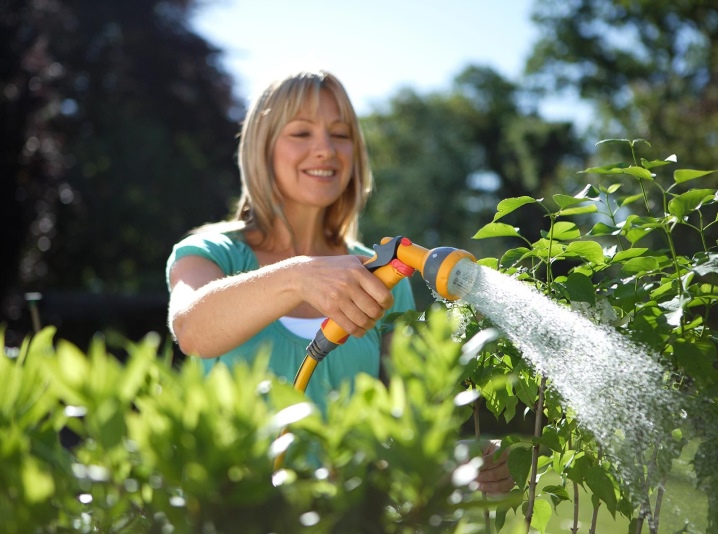
Top dressing
If the land on the site is saturated with useful components, then the elderberry will not suffer without top dressing. If the soil is poor, then in the spring and summer fertilizers containing nitrogen should be applied to it. This will have a good effect on the growth rate of the elderberry. Organic fertilizing is also suitable. The best options are chicken dung tincture, slurry. Complex formulations of the mineral type, as well as urea, are also suitable. Elderberry cannot be fertilized in autumn.
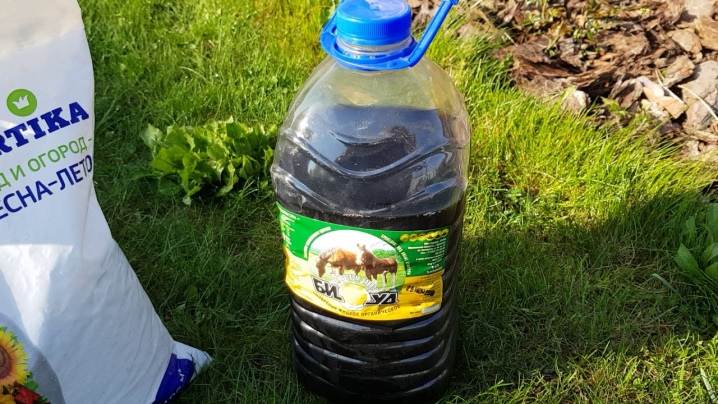
Pruning
Pruning is necessary for elderberry 2 times a year - sanitary and shaping, rejuvenating is needed 1 time in 3 years. Pruning is best done when the plant is dormant. It is usually springtime. Sometimes in the autumn season, after harvesting the fruits and falling leaves, they implement sanitary pruning.
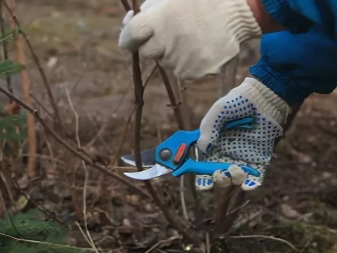
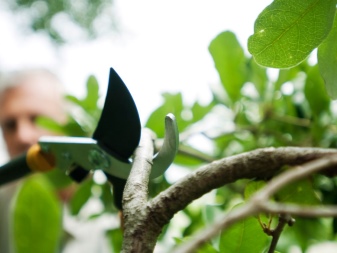
Reproduction methods
Elderberry can be propagated in several ways.
- Seeds. The easiest, most affordable way. Elderberry seeds can be purchased at a specialty store and planted in open ground, observing all the rules.
- By division. An adult landing is taken out of the ground and divided into equal parts. A sharp knife is suitable for this. Each part must have roots and shoots. Places of cuts on the bush are treated with wood ash. The bushes are immediately transplanted into new holes.
- Layers. Lignified shoots will be needed for 2-3 years. They are tilted closer to the ground, placed in prepared grooves, fixed and buried.
- Cuttings. It is necessary to cut off pieces of young twigs with disinfected scissors or a knife. The length should be 8-12 cm. Then they are transplanted into a substrate of peat and moistened sand (1: 1).
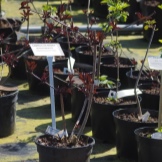


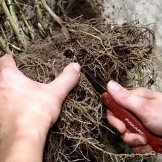
Diseases and pests
Elderberry is a plant that is less susceptible to disease. However, there are some parasites that still attempt on the elderberry.
- Landing front sight. You can get rid of it only with the help of double spraying with "Kinmiks" or "Decis". "Karbofos" will also help.
- Elderberry leaf mite. From this pest can be saved twice by spraying the plant with "Fitoverm" or "Metacom".

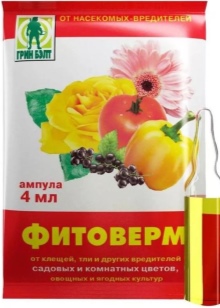

Tomato mosaic virus is dangerous for elderberry. It reduces the viability of the plant, reduces the yield and ultimately simply kills the bush. Fungal diseases can harm elderberry. The most dangerous is powdery mildew. It leads to the formation of a whitish plaque. Over time, the plant becomes much weaker. In advanced cases, the foliage of the plant begins to curl, and then completely fall off. This disease is especially active in humid conditions. All affected areas of plants must be burned. Bushes need to be treated with fungicidal compounds. The occurrence of various diseases can be caused by increased soil moisture against a background of low temperatures, as well as weak air circulation around the plantings.
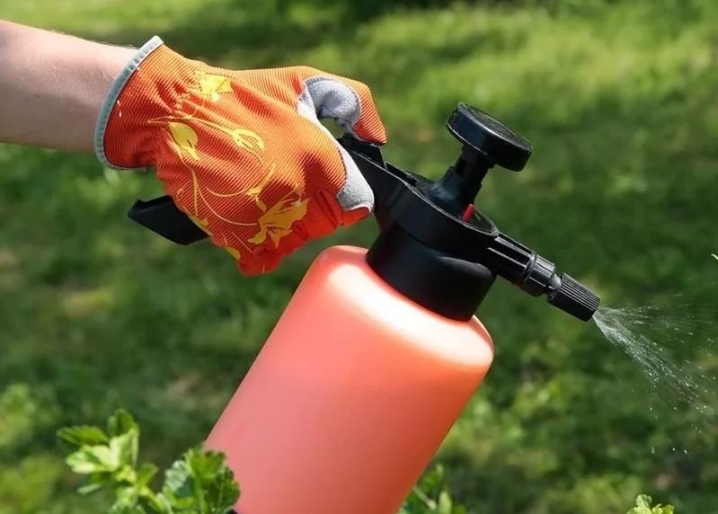
If you notice that the plant is sick or is still a victim of any pest, you must take all measures to treat the elderberry as soon as possible.
Use in landscape design
Elderberry can become a spectacular decoration in almost any garden. They fit especially interestingly and harmoniously into those garden areas, which are organized in the form of original imitations of living corners of nature. Typically, this type of design is done in a landscape style.

Elderberry looks gorgeous in composition with other beautiful landings. Plants can be full of bright colors and the house area or garden can sparkle with new colors.
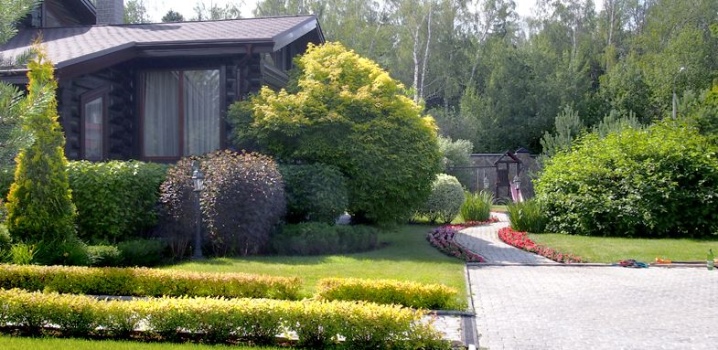
Lush elderberry bushes are often planted near the house or around the water bodies on the site, if any. In this case, the height of the bushes may vary. Both low and tall specimens will look interesting - it all depends on the rest of the background and composition.

For information on how to properly care for an elderberry, see the next video.































































The comment was sent successfully.